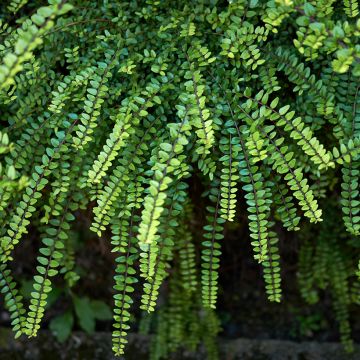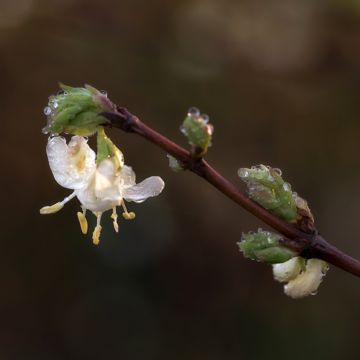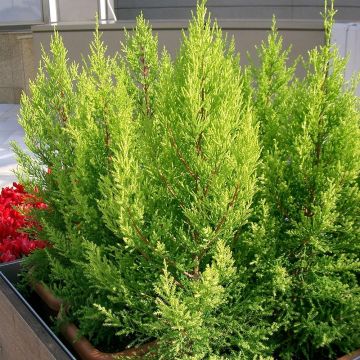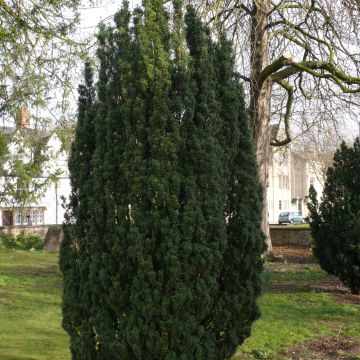

Lonicera xylosteum


Lonicera xylosteum


Lonicera xylosteum


Lonicera xylosteum


Lonicera xylosteum


Lonicera xylosteum


Lonicera xylosteum


Lonicera xylosteum
Lonicera xylosteum
Lonicera xylosteum
Fly Honeysuckle, European Honeysuckle, European fly Honeysuckle, Dwarf Honeysuckle, Fly Woodbine
This plant carries a 24 months recovery warranty
More information
We guarantee the quality of our plants for a full growing cycle, and will replace at our expense any plant that fails to recover under normal climatic and planting conditions.
From €5.90 for pickup delivery and €6.90 for home delivery
Express home delivery from €8.90.
Delivery to Corse prohibited: UE law prohibits the import of this plant from mainland France to Corse as part of the fight against Xylella fastidiosa. Please accept our sincere apologies.
More information
Does this plant fit my garden?
Set up your Plantfit profile →
Description
Lonicera xylosteum, known as the European fly honeysuckle or Fly woodbine, is part of our wild flora. It is a vigorous and bushy deciduous shrub that does not climb, but forms a beautiful mass of green-grey downy foliage from spring to autumn. It blooms with white to pale yellow flowers in late spring and then produces small red and translucent fruits, which are decorative and appreciated by birds. This hardy and carefree plant should appeal to enthusiasts of naturalistic gardens and country hedges, and especially to owners of small gardens who will keep it pruned to less than 2m (6 ft 7 in) in height.
Lonicera xylosteum is a deciduous shrub of the Caprifoliaceae family originating from Europe, the Caucasus, and Siberia. In nature, it is found in woods, hedges, and scrubland, often on limestone soil. It has naturally bushy and somewhat scruffy growth, with a dense and bushy habit. The growth, slow in young plants, accelerates later on. It will reach an average height of 2.50m (8 ft 2 in) with a spread of 1.75m (5 ft 8 in) to 2m. Its flexible branches, initially upright, then slightly drooping at their tips, bear ovate leaves, 3-6cm (1.2-2.4 in) long and 2-4cm (0.8-1.6 in) wide, which are slightly pointed at their ends. They are grey-green on top and covered with a fine down, then they turn yellow in autumn before falling. From May to June, numerous small flowers appear along the branches in the axils of the leaves, which are white to cream-yellow. These slightly fragrant and nectar-rich flowers are followed in summer by clusters of small red and translucent fruits, which stand out against the fairly dark foliage. This shrubby honeysuckle also has a beautiful greyish bark that peels with age.
Plant Lonicera xylosteum in any soil, even limestone, but preferably moist soil. This shrub will thrive in partial shade or full sun, but the flowering will be more abundant in full sun. Pruning is not necessary, but can be carried out after flowering, and will not harm the plant's health but improve its density. It will find a home in all gardens, including small ones, or in a formal or informal hedge. It also works wonders in low maintenance shrub borders mixed with other shrubby honeysuckles (Lonicera tatarica Arnold's Red), Weigelas or Dipelta, Japanese quinces (Chaenomeles x superba), Deutzia, Enkianthus Campanulatus, Exochorda racemosa, Forsythias or Kolkwitzia. Birds are fond of its berries and find refuge in its branches in spring and summer.
Report an error about the product description
Lonicera xylosteum in pictures






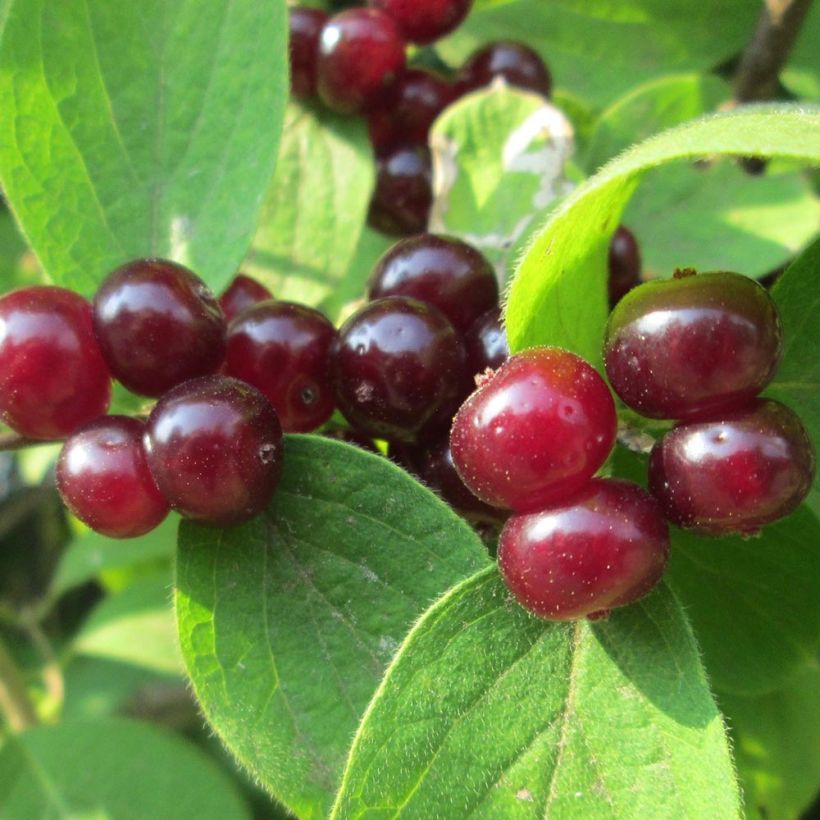

Plant habit
Flowering
Foliage
Botanical data
Lonicera
xylosteum
Caprifoliaceae
Fly Honeysuckle, European Honeysuckle, European fly Honeysuckle, Dwarf Honeysuckle, Fly Woodbine
Western Europe
Other Honeysuckle
Planting and care
Plant this honeysuckle in any soil, even chalky but preferably fertile soil that remains slightly moist even in summer. This shrub will thrive in partial shade or in the sun, but flowering will be more abundant in the sun. It is a perfectly hardy plant, even in the east and in the mountains. Pruning is not essential, but can increase the density of the plant. Pruning after flowering, will in no way harm the health of the plant, but will deprive you of fruits. Remove 1/5 to 1/4 of the oldest branches at the base of the plant. The bush is sometimes subject to attacks from aphids.
Planting period
Intended location
Care
-
, onOrder confirmed
Reply from on Promesse de fleurs
Hedge shrubs
Haven't found what you were looking for?
Hardiness is the lowest winter temperature a plant can endure without suffering serious damage or even dying. However, hardiness is affected by location (a sheltered area, such as a patio), protection (winter cover) and soil type (hardiness is improved by well-drained soil).

Photo Sharing Terms & Conditions
In order to encourage gardeners to interact and share their experiences, Promesse de fleurs offers various media enabling content to be uploaded onto its Site - in particular via the ‘Photo sharing’ module.
The User agrees to refrain from:
- Posting any content that is illegal, prejudicial, insulting, racist, inciteful to hatred, revisionist, contrary to public decency, that infringes on privacy or on the privacy rights of third parties, in particular the publicity rights of persons and goods, intellectual property rights, or the right to privacy.
- Submitting content on behalf of a third party;
- Impersonate the identity of a third party and/or publish any personal information about a third party;
In general, the User undertakes to refrain from any unethical behaviour.
All Content (in particular text, comments, files, images, photos, videos, creative works, etc.), which may be subject to property or intellectual property rights, image or other private rights, shall remain the property of the User, subject to the limited rights granted by the terms of the licence granted by Promesse de fleurs as stated below. Users are at liberty to publish or not to publish such Content on the Site, notably via the ‘Photo Sharing’ facility, and accept that this Content shall be made public and freely accessible, notably on the Internet.
Users further acknowledge, undertake to have ,and guarantee that they hold all necessary rights and permissions to publish such material on the Site, in particular with regard to the legislation in force pertaining to any privacy, property, intellectual property, image, or contractual rights, or rights of any other nature. By publishing such Content on the Site, Users acknowledge accepting full liability as publishers of the Content within the meaning of the law, and grant Promesse de fleurs, free of charge, an inclusive, worldwide licence for the said Content for the entire duration of its publication, including all reproduction, representation, up/downloading, displaying, performing, transmission, and storage rights.
Users also grant permission for their name to be linked to the Content and accept that this link may not always be made available.
By engaging in posting material, Users consent to their Content becoming automatically accessible on the Internet, in particular on other sites and/or blogs and/or web pages of the Promesse de fleurs site, including in particular social pages and the Promesse de fleurs catalogue.
Users may secure the removal of entrusted content free of charge by issuing a simple request via our contact form.
The flowering period indicated on our website applies to countries and regions located in USDA zone 8 (France, the United Kingdom, Ireland, the Netherlands, etc.)
It will vary according to where you live:
- In zones 9 to 10 (Italy, Spain, Greece, etc.), flowering will occur about 2 to 4 weeks earlier.
- In zones 6 to 7 (Germany, Poland, Slovenia, and lower mountainous regions), flowering will be delayed by 2 to 3 weeks.
- In zone 5 (Central Europe, Scandinavia), blooming will be delayed by 3 to 5 weeks.
In temperate climates, pruning of spring-flowering shrubs (forsythia, spireas, etc.) should be done just after flowering.
Pruning of summer-flowering shrubs (Indian Lilac, Perovskia, etc.) can be done in winter or spring.
In cold regions as well as with frost-sensitive plants, avoid pruning too early when severe frosts may still occur.
The planting period indicated on our website applies to countries and regions located in USDA zone 8 (France, United Kingdom, Ireland, Netherlands).
It will vary according to where you live:
- In Mediterranean zones (Marseille, Madrid, Milan, etc.), autumn and winter are the best planting periods.
- In continental zones (Strasbourg, Munich, Vienna, etc.), delay planting by 2 to 3 weeks in spring and bring it forward by 2 to 4 weeks in autumn.
- In mountainous regions (the Alps, Pyrenees, Carpathians, etc.), it is best to plant in late spring (May-June) or late summer (August-September).
The harvesting period indicated on our website applies to countries and regions in USDA zone 8 (France, England, Ireland, the Netherlands).
In colder areas (Scandinavia, Poland, Austria...) fruit and vegetable harvests are likely to be delayed by 3-4 weeks.
In warmer areas (Italy, Spain, Greece, etc.), harvesting will probably take place earlier, depending on weather conditions.
The sowing periods indicated on our website apply to countries and regions within USDA Zone 8 (France, UK, Ireland, Netherlands).
In colder areas (Scandinavia, Poland, Austria...), delay any outdoor sowing by 3-4 weeks, or sow under glass.
In warmer climes (Italy, Spain, Greece, etc.), bring outdoor sowing forward by a few weeks.








































